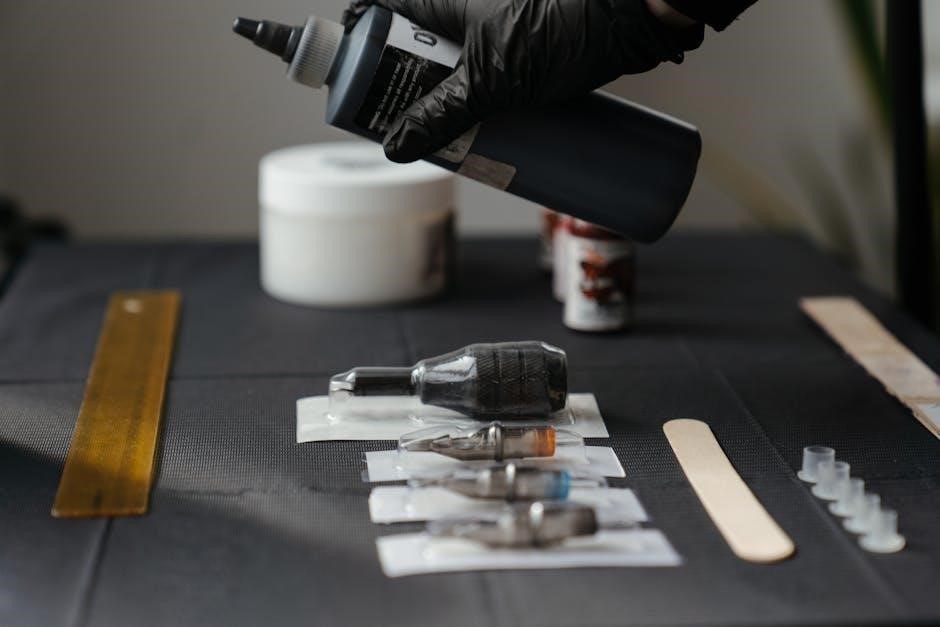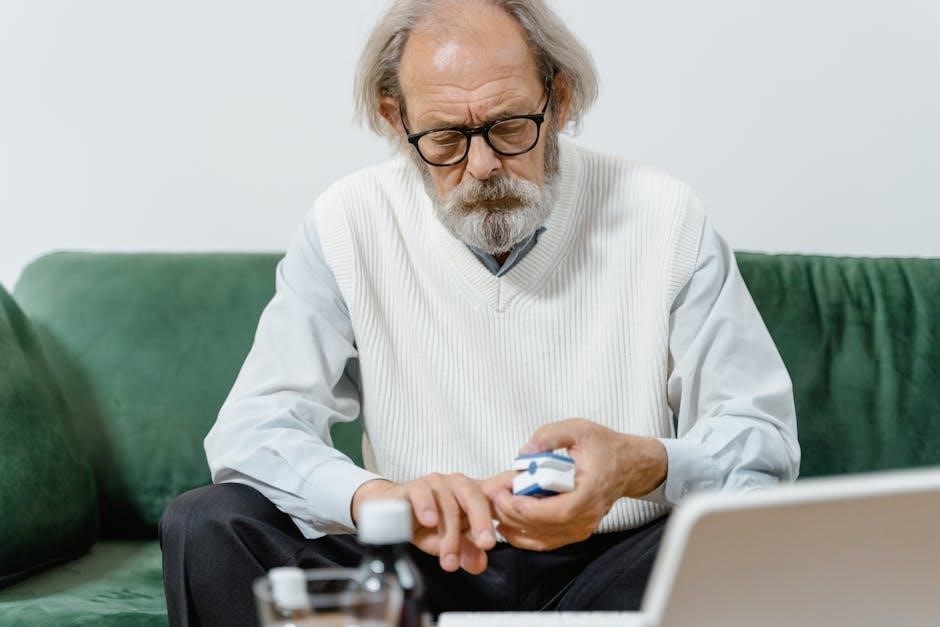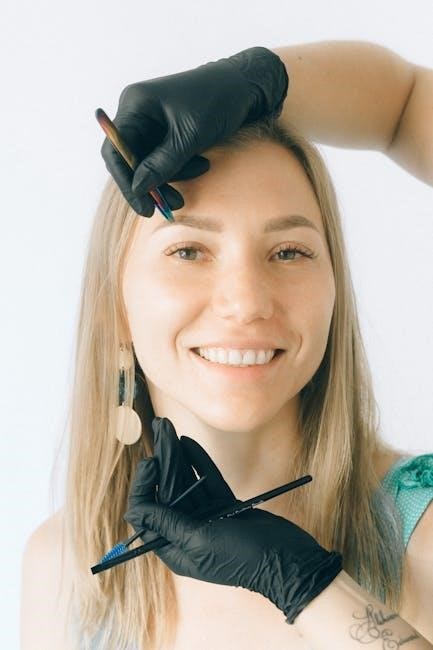Importance of Microblading Aftercare
Proper aftercare is crucial for ensuring the longevity and vibrancy of microblading results, promoting proper healing, and preventing complications that could affect pigment retention and overall appearance.
Why Proper Aftercare is Crucial for Long-Lasting Results
Proper microblading aftercare is essential for ensuring the best possible outcomes. It prevents infection, promotes healing, and helps retain the pigment’s vibrancy. By following aftercare instructions, you protect the treated area from bacteria and environmental damage, which can fade or distort the results. Consistent care also supports skin regeneration, allowing the brows to heal evenly and maintain their natural appearance. Neglecting aftercare can lead to complications like scarring or uneven pigment retention, compromising the longevity of your microbladed brows. Thus, dedication to aftercare routines is vital for achieving and preserving beautiful, long-lasting results.

Immediate Post-Treatment Care
After the procedure, gently pat the area dry with a clean tissue to remove excess lymph fluid. Avoid water and makeup for 48 hours, and apply a thin layer of recommended ointment as directed to promote healing and prevent infection.
Day of Treatment: Key Steps to Follow
- Avoid getting the treated area wet for the first 48 hours, except for gentle cleansing as directed.
- Use sterile gauze to blot excess lymph fluid throughout the day to prevent scabbing.
- Apply a thin layer of the recommended aftercare ointment, like Aquahor, with a cotton swab after cleansing.
- Refrain from applying makeup or creams to the area to minimize infection risks.
- Keep the area clean and moisturized to support the healing process and retain pigment.

Day-by-Day Healing Process
The 30-day healing journey includes initial darkness, scabbing (days 3-5), and gradual lightening as the skin heals, culminating in a touch-up session for final results.
Understanding the 30-Day Recovery Timeline
The microblading recovery process spans 30 days, with distinct phases. Days 1-2: Brows appear dark and swollen, with lymph fluid requiring gentle blotting; Days 3-5: Scabbing begins, and itching may occur, but picking is discouraged. By days 7-14, scabs fall off, revealing lighter brows that may look patchy. Days 14-30: Skin regenerates, and pigment settles, with a touch-up session typically scheduled around day 30. Proper aftercare ensures optimal healing and vibrant results. Avoid makeup, water, and sun exposure during this period to prevent complications and promote pigment retention.

Essential Aftercare Routine
A consistent routine involves washing the area twice daily with antibacterial soap, gently patting dry, and applying a thin layer of aftercare ointment to keep brows clean and moisturized.
Daily Cleaning and Moisturizing Techniques
For optimal healing, gently clean the treated area twice daily with antibacterial soap and lukewarm water using clean fingertips. Avoid rubbing; instead, pat dry with a clean tissue. Apply a thin layer of recommended aftercare ointment to keep the brows moisturized and protected. During the first 7 days, avoid using exfoliants or acidic products. Gently pat dry after cleansing to prevent irritation. Consistent daily care ensures proper healing, prevents infection, and promotes pigment retention for desired results. Keep the area clean and hydrated to support the skin’s natural recovery process and achieve the best possible outcome.

Things to Avoid During Healing
Avoid water exposure, makeup, picking scabs, and excessive sun to prevent infection and pigment loss. Refrain from rubbing or touching the area to ensure optimal healing and results.
Activities and Products That Can Compromise Results
During the healing process, avoid activities that expose your brows to water, sweat, or friction, as these can lead to infection or pigment loss. Refrain from using exfoliating products, harsh skincare acids, or makeup on the treated area. Avoid direct sunlight and tanning beds, as UV exposure can fade the pigment prematurely. Do not use skincare products containing alcohol or fragrances, as they can irritate the skin and prolong healing. Additionally, avoid touching or picking at the brows, as this can introduce bacteria and damage the microbladed strokes, leading to uneven results or scarring.

Recommended Aftercare Products
Use antibacterial soap and ointments like Aquahor or Cetaphil to keep the area clean and moisturized, promoting optimal healing and pigment retention without irritation or infection risks.
Best Ointments and Cleansers for Optimal Healing
For optimal healing, use antibacterial soap like Cetaphil and ointments such as Aquahor. These products keep the area clean, moisturized, and promote pigment retention. Apply ointments thinly with a cotton swab after washing to avoid irritation. Avoid exfoliants or acids, as they can harm the healing process. Gentle, fragrance-free cleansers are ideal for daily use. These products help prevent infection and support the skin’s natural recovery, ensuring vibrant, long-lasting results. Proper use of these products aids in maintaining the eyebrows’ appearance and health throughout the healing journey.

Follow-Up Appointment
A follow-up appointment is essential for touching up areas where pigment may not hold well, ensuring desired results. Scheduled 4-6 weeks post-procedure, it refines the brows.
The Role of the Touch-Up Session
The touch-up session is crucial for refining and perfecting microbladed brows. Typically scheduled 4-6 weeks after the initial procedure, it allows the artist to address areas where pigment may not have held well. During this session, the artist can deepen strokes, adjust color, or add more definition. It’s an opportunity to make adjustments based on how the skin healed and ensure the desired results are achieved. Proper aftercare is vital leading up to this session, as it directly impacts the final outcome. The touch-up is essential for long-lasting, natural-looking brows that meet your expectations.
Maintaining Your Results
Maintaining microbladed brows requires protection from direct sunlight, using gentle skincare products, and avoiding harsh chemicals. Occasional touch-ups may be needed to refresh the appearance of your brows.
Long-Term Care Tips for Beautiful Brows
For long-lasting results, protect your brows from direct sunlight and harsh chemicals. Use gentle skincare products and avoid exfoliants. Moisturize regularly to keep the skin hydrated and healthy.
Touch-ups every 12-18 months can refresh the appearance. Avoid excessive sun exposure without SPF to prevent pigment fading. Keep the area clean and avoid harsh makeup removers. Using brow serums can enhance brow health. By following these tips, you can maintain vibrant, defined brows for years to come.
Common Concerns and Solutions
Common concerns include itching, scabbing, and infection risks. To address these, avoid picking scabs, keep the area clean, and apply prescribed ointments to ensure proper healing.
Addressing Itching, Scabbing, and Infection Risks
Itching and scabbing are common during healing, but it’s crucial to resist scratching to avoid pigment loss or infection. Gently clean the area with antibacterial soap and pat dry. Apply a thin layer of aftercare ointment to soothe itching and promote healing. If scabs form, let them fall off naturally. Signs of infection, such as redness, swelling, or pus, require immediate medical attention. Maintain cleanliness and avoid sharing products to minimize infection risks. Following proper aftercare ensures a smooth recovery and optimal results.

